If you want to bring some tropical pizzazz to your garden with a stunning perennial, you can consider planting canna lilies.
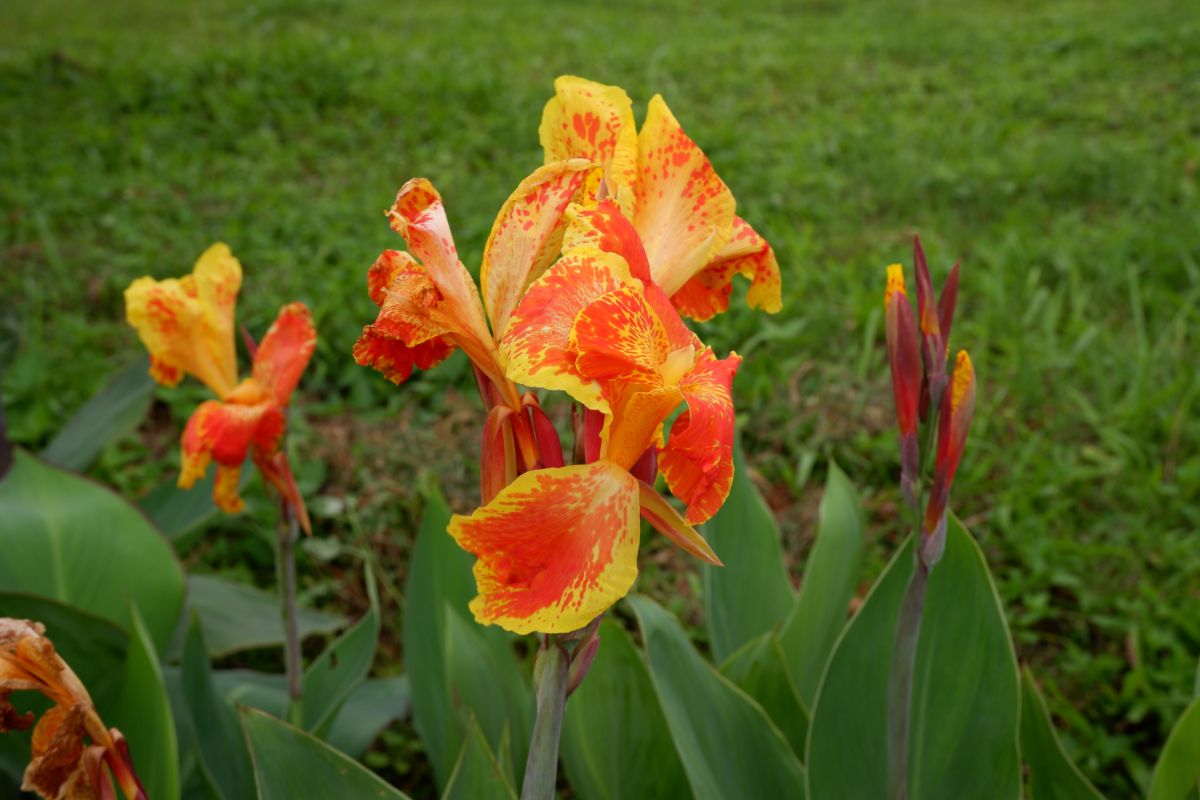
In this detailed canna lily grow guide, we will teach you how to plant and maintain canna lilies no matter your climate zone.
Use the advanced jump below to jump directly to the section you need, or read the full guide to learn all you need to know to get started.
Jump to:
- What Are Canna Lilies?
- Canna Lily Basics
- Where Do Canna Lilies Grow?
- Are Canna Lilies Annuals or Perennials?
- Why Grow Canna Lilies?
- When Do Canna Lilies Bloom?
- How Long Do Canna Lilies Bloom?
- When to Plant Canna Lilies
- Ideal Growing Conditions for Canna Lilies
- How to Plant Canna Lilies
- How to Propagate Canna Lilies
- How to Care for Canna Lilies
- Recommended Planting Combinations for Canna Lily
- Canna Lily Landscaping Ideas
- Recommended Canna Lily Varieties
- Frequently Asked Questions About Growing Canna Lilies
- Where to Buy Canna Lilies
What Are Canna Lilies?
Canna lilies are plants that are part of the genus Canna, which is part of the family Cannaceae. There are just 10 species in the Canna genus.
Canna lilies are frequently confused with the similarly-named calla lilies. But calla lilies are not members of the same genus. They instead belong to the genera Zantedeschia and Calla.
As a further point of interest, canna lilies may be called “lilies,” but they are not technically true lilies.
True lilies are plants in the Lilium genus.
Indeed, calla lilies likewise are not true lilies, nor are quite a few other plants that we refer to as lilies.
Canna lilies are popular as ornamental blooms, and a number of cultivars have received the Award of Garden Merit from the Royal Horticultural Society. These include Picasso, Alaska, Erebus, Verdi, Russian Red, and others.
Canna Lily Basics
| Zones: | 7-10 |
| Blooming season: | Summer |
| Expected height: | Up to 5 feet |
| Soil: | Moist, well-draining soil |
| Sun: | Full |
Where Do Canna Lilies Grow?
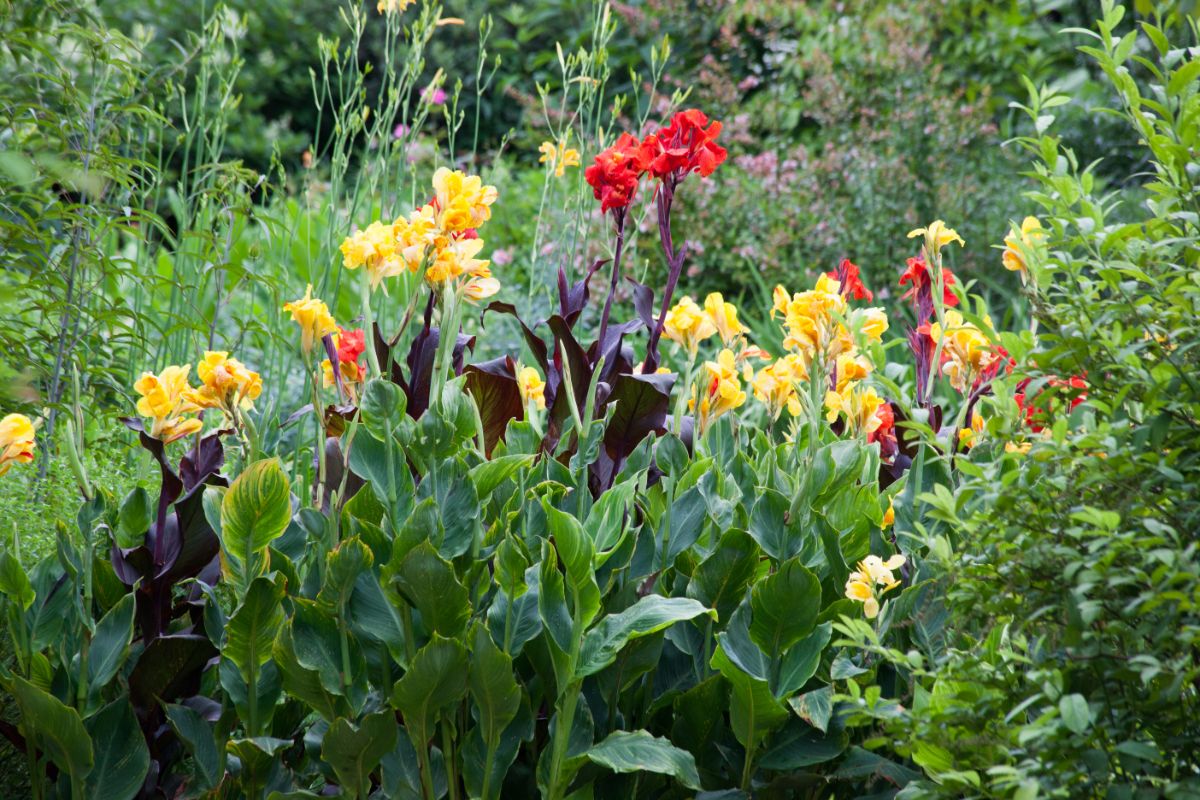
Canna lilies are native to the Americas, specifically the tropics and subtropics. But today, they are cultivated around the world, including in cooler climate zones.
Are Canna Lilies Annuals or Perennials?
As a tropical plant, canna lilies are classified as tender perennials. What that means is that if you live in a warm climate zone like 9-10, you should be able to grow canna lilies outdoors year-round and have them return to bloom each year again.
What if you are in a colder climate? You can grow them as annuals, or you can simply take the extra step of overwintering them each year indoors. If you do that, you can grow them as perennials, and they will bloom each season.
Typically, we see the zones listed for canna hardiness as 9-10. But sometimes, we see zones 7 and 8 included as well.
Commenting on this matter, Almanac writes, “In zones ⅞ and warmer, cannas can be left in the ground year-round … Note: Zone 7 doesn’t always experience canna-killing winter temperatures, so it’s a judgment call.”
Why Grow Canna Lilies?
Here are some reasons to grow cannas in your perennial garden:
• Unlike a lot of other plants that are referred to as “lilies,” cannas are pet-safe.
• While canna lilies generally prefer moist, well-drained soil, some can grow near or even in water. So, if you have a hard-to-fill location near a water feature in your garden, canna lilies may be the solution.
• In hot climates and humid conditions where other plants may struggle and wilt, canna lilies will be flourishing.
• You can look forward to continuous bright blooms for several months in your garden from canna lilies.
• The tropical foliage of canna lilies is every bit as much a showstopper as the bright flowers. Since the foliage is voluminous, even a single canna lily plant can be a big help for filling in an empty patch in your garden.
• A lot of plants that grow on tall stalks are prone to flopping over, but not canna lilies. They rarely require support.
• Hummingbirds often flit around canna lilies, drawing nectar from their blooms. So, they are the perfect addition to a tropical pollinator garden.
• Issues with pests tend to be minimal when you are growing canna lilies. They usually do not suffer from disease either.
When Do Canna Lilies Bloom?
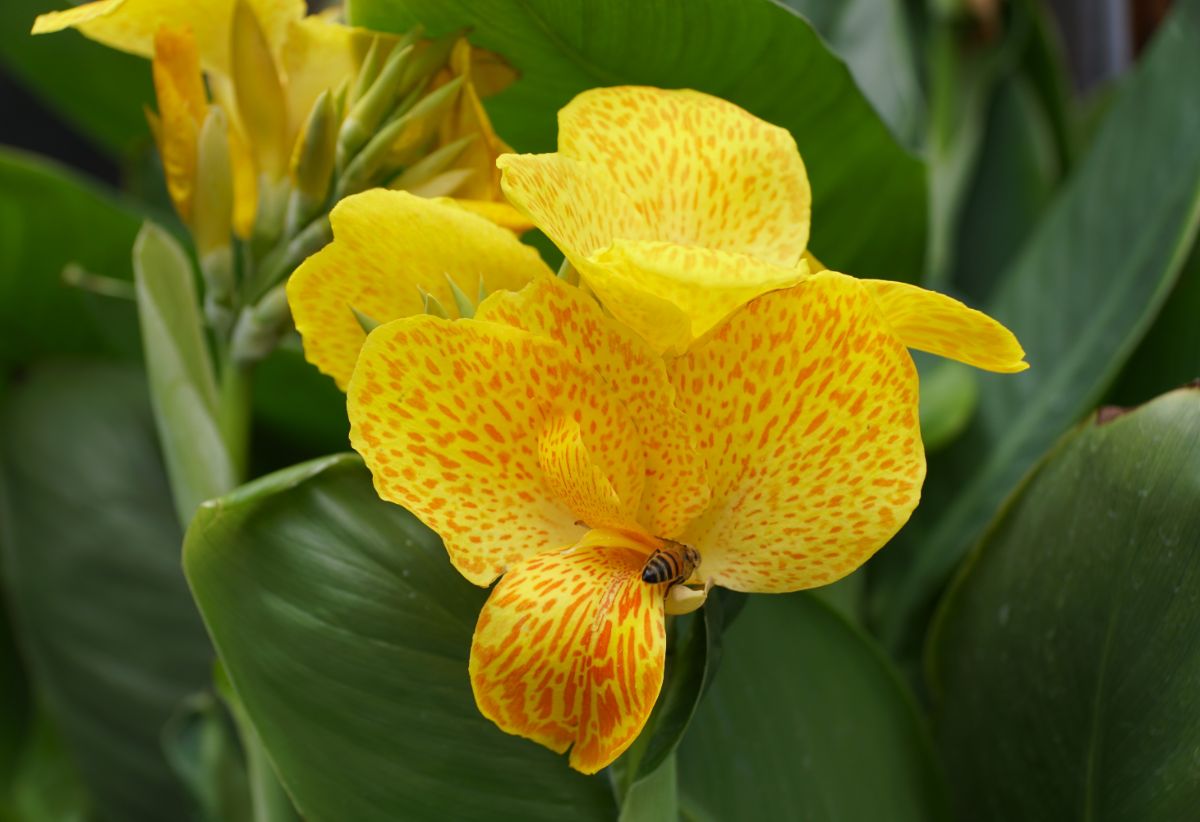
The bloom period for canna lilies is summer into fall.
How Long Do Canna Lilies Bloom?
Each bloom on a calla lily plant lasts several days. But the good news is that the blooms are produced continuously during the growing season.
You can expect three to four months of blooms from your canna lilies every year.
When to Plant Canna Lilies
Once the last frost of the year is over, you can plant your canna lilies. Any time between late spring and early summer is suitable.
If you want to get them off to an early start, you can do so a month in advance indoors. When you transplant them outdoors, you will need to harden them first.
Ideal Growing Conditions for Canna Lilies
Let’s go over what your canna lilies need in terms of sun, soil, and water requirements in order to produce gorgeous blooms year after year.
How Much Sun Do Canna Lilies Need?
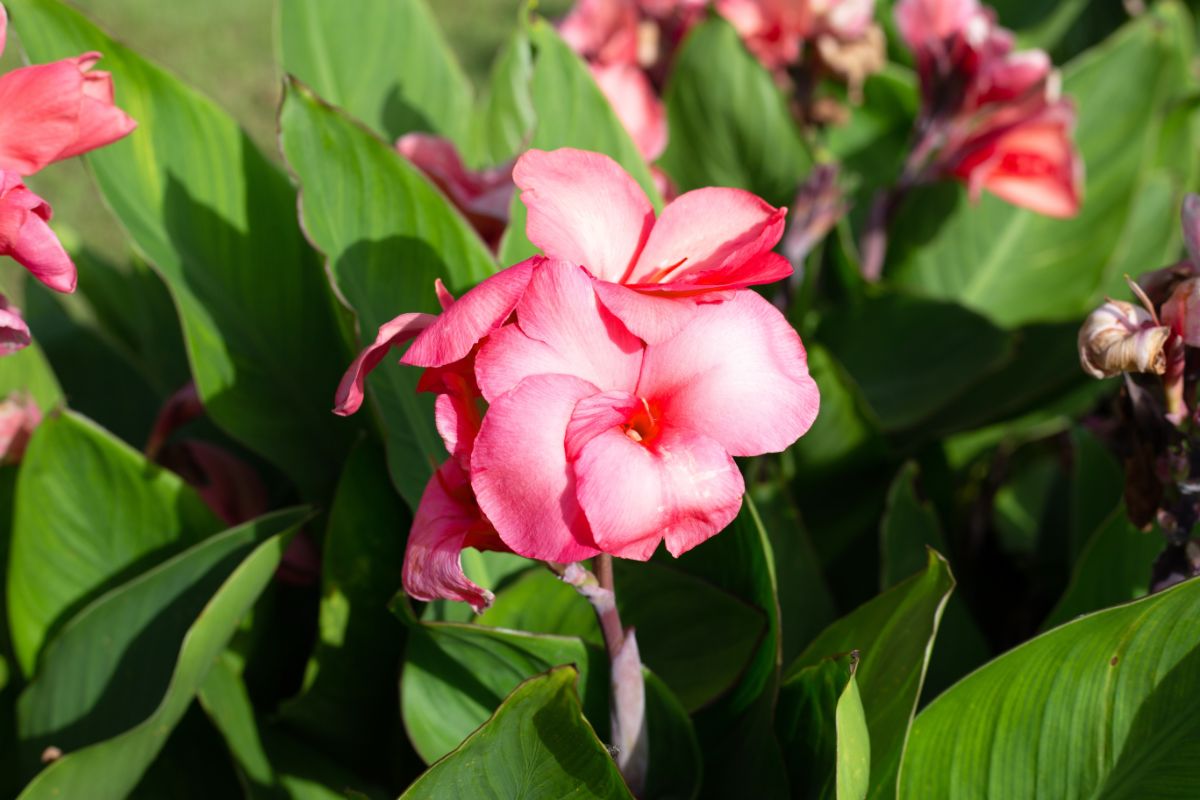
Canna lilies can grow in full sun or partial shade. Like many other plants that fit that description, they require at least 6-8 hours of sunlight daily.
Full sun is always best if you are growing canna lilies in a cooler climate zone. If your climate zone is hot, however, they may benefit from direct sunlight in the morning and some shade in the afternoon.
What Type of Soil is Right for Canna Lilies?
Canna lilies are not too picky about soil types. In general, they need moist soil, and usually, it is best if it is well-draining. But there are some canna lily species that can grow in waterlogged conditions (they can even be submerged).
These plants prefer soil to be on the rich side. So, you should consider mixing compost into the soil before you plant them.
One more thing to note is that a slightly acidic pH is preferable for canna lilies. Adding compost to the soil will not only enrich it but also make the soil more acidic.
How Much Water Do Canna Lilies Need?
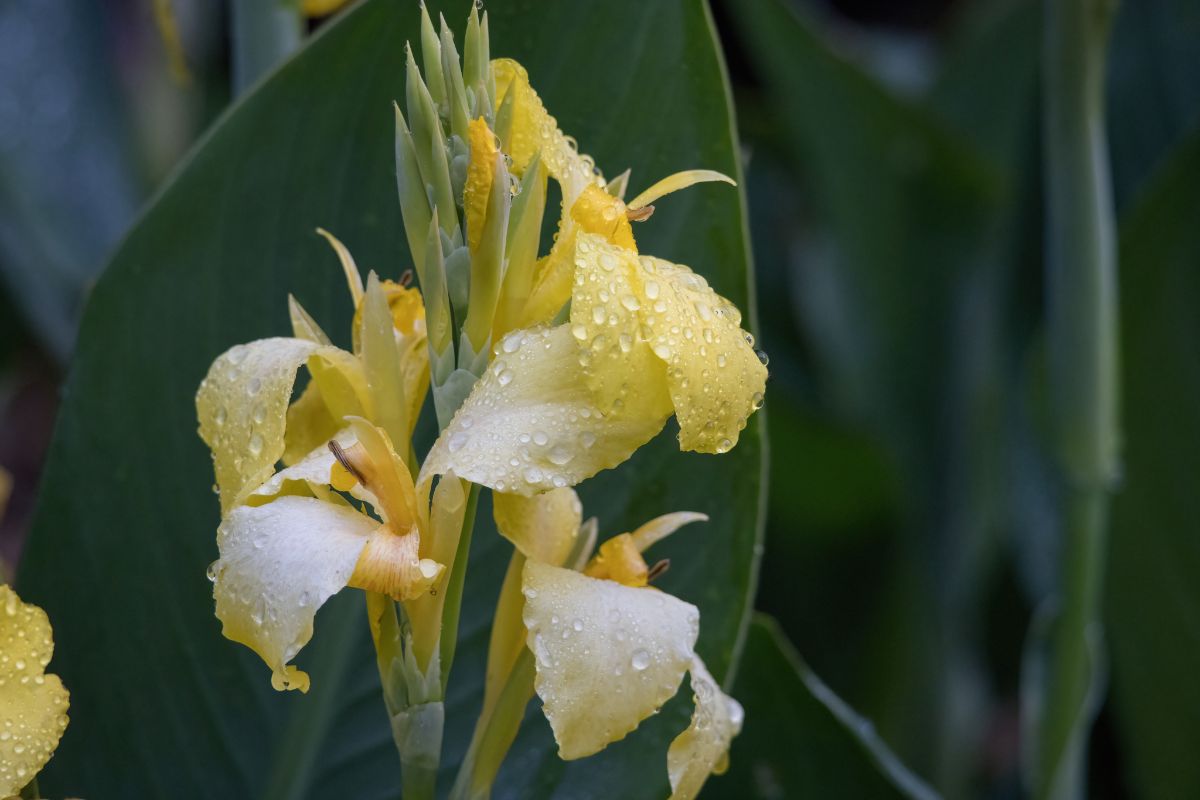
Anywhere from 1-2 inches of water per week will keep your canna lilies happy. With most perennials, around an inch a week is adequate. But depending on the conditions where you live, your canna lilies may need a little bit more than most of the other plants around them.
How to Plant Canna Lilies
You can grow canna lilies in pots in your container garden, or you can plant them directly in the ground. Let’s go over the instructions for both. We are going to assume you are starting out with a rhizome, rather than growing from seed (see the section on How to Propagate Canna Lilies to learn more about growing them from seeds).
Ground Planting
1. Just a sunny spot in your garden to plant your canna lilies.
2. Use a shovel to loosen up the soil. Mix in compost to increase the richness and improve drainage.
3. Make holes and plant your rhizomes. They should be spaced apart 1-2 feet. Plant each one 1-2 inches deep. You will notice that each rhizome has an “eye.” This should face upward.
4. Finish backfilling the soil and water deeply.
Almanac says, “Water thoroughly, then withhold water for as long as 3 weeks, and watch for signs of growth. Cannas are slow to sprout. Once sprouted, water at least once a week by slowly soaking the area around the roots.”
Container Planting
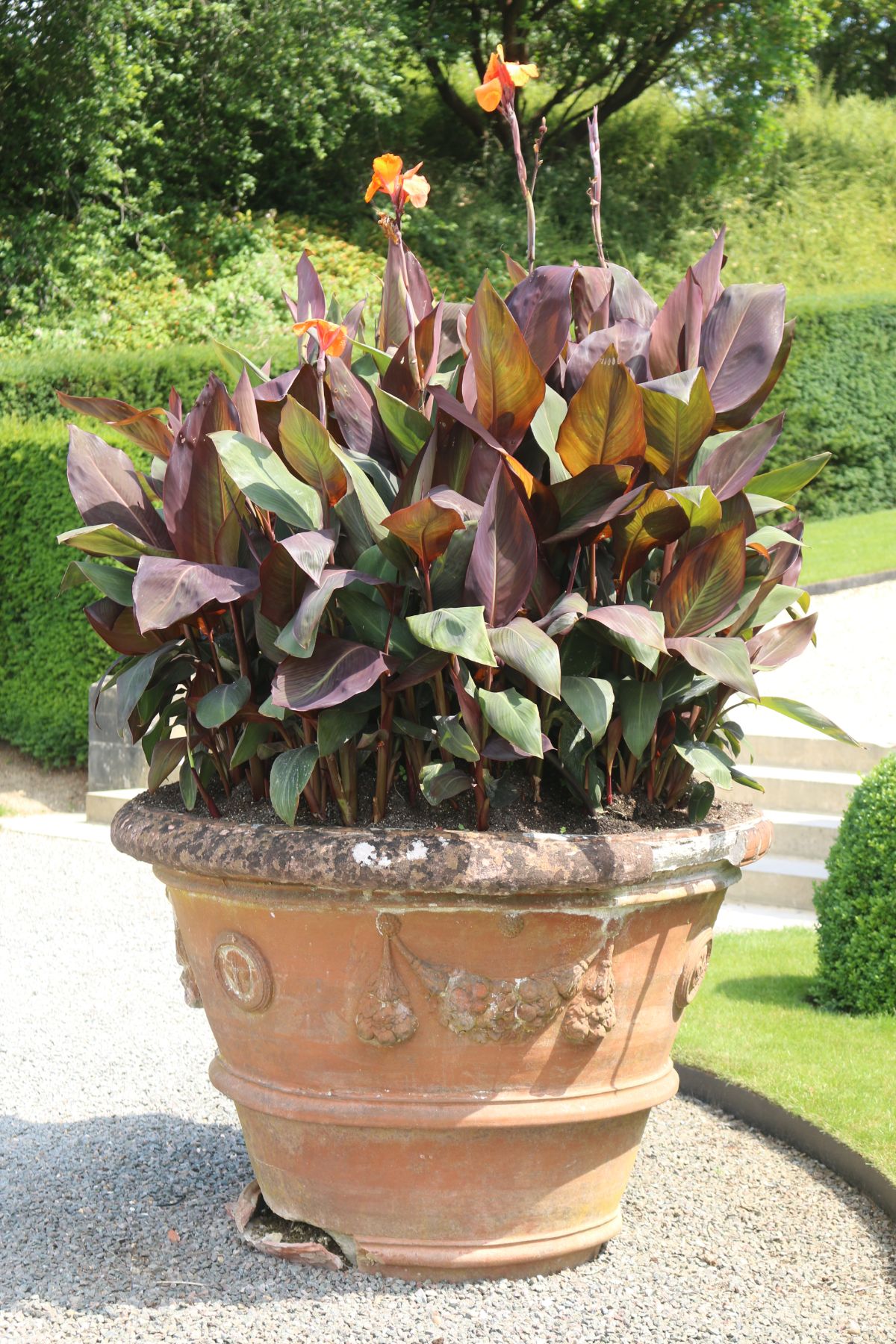
1. Begin by getting a large container for your potted canna lilies. Around 15 inches is a good size. The roots can get to be large, so a deep container is best. As always, drainage holes are a must.
2. Start filling your pot with potting mix.
3. Plant the rhizome and finish filling in the potting mix.
4. Water well.
5. Place your container where your canna lily will get plenty of sunlight.
Canna lilies in containers can dry out more rapidly than those in your garden beds. Adequate soil moisture is very important for these tropical plants, so make sure you are keeping up with their watering needs.
How to Propagate Canna Lilies
If you want to propagate your canna lilies, your options are to grow them from seed or to divide them. Let’s go over the instructions for both methods.
Starting Canna Lilies from Seed
If you want to grow canna lilies from seeds, you will need to be patient. They will usually bloom in their second year. Here are the steps.
1. Harvest canna lily seeds or buy them.
2. Prior to starting the seeds, soak them in warm water for a period of 48 hours.
3. Remove the seeds from the water and transfer them to containers filled with multipurpose compost. The containers, of course, should have drainage holes. There should be a light layer of compost on top of the seeds.
4. Use a spray bottle to moisten the compost.
5. Cover the containers with clear plastic to help maintain moisture as the seeds are germinating. Routinely check to make sure the compost is still moist. Use the spray bottle to add more water if it starts drying out.
6. When the seeds sprout, remove the plastic cover from the top.
7. Moisten the compost when necessary. Wait for the seedlings to grow a little bit.
8. Transplant the seedlings into larger containers. Keep caring for them while they continue to grow.
Eventually, you can move the young canna lily plants outdoors. Before doing this, you should take time to harden them.
How to Divide Canna Lilies
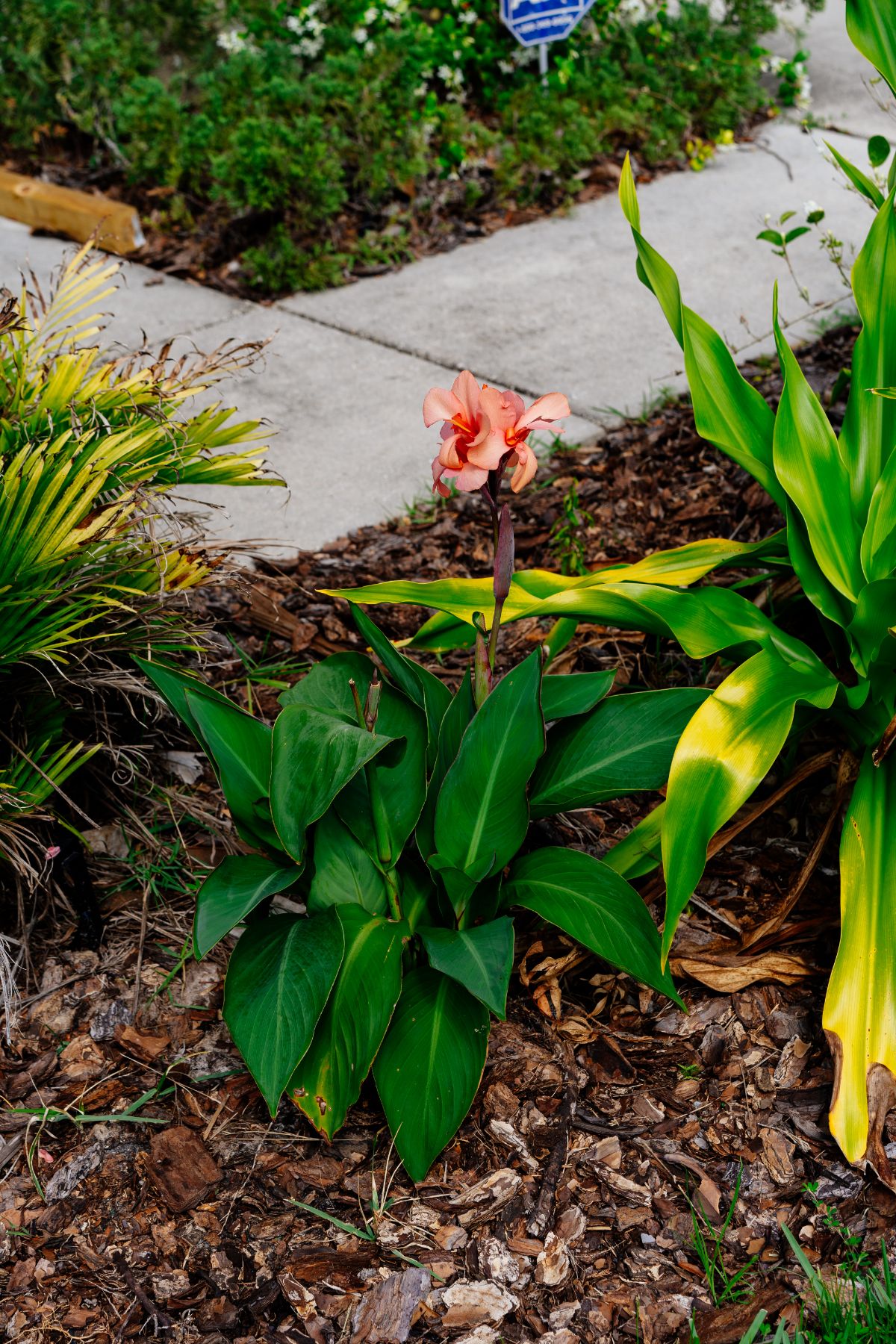
Over time, you will be able to divide your canna lilies. This is pretty simple and convenient to do since, in many locations, you will be digging them up to overwinter each year anyway.
1. Use a shovel to dig down in a circle around each canna lily plant. Keep the shovel far enough back from the plant that you do not harm the rhizomes or roots.
2. After you have completed a circle around your plant, you can push the shovel underneath and pry the plant up. Again, make sure to get all the way under the roots, so you do not damage them.
3. Once you have removed the plant from the ground, you can wipe the excess dirt away.
4. You can now split the rhizomes apart to make a few sections. You should be able to do this pretty easily.
5. Make new holes for your divided canna lilies, and transplant them.
6. Backfill the soil and water well.
How to Care for Canna Lilies
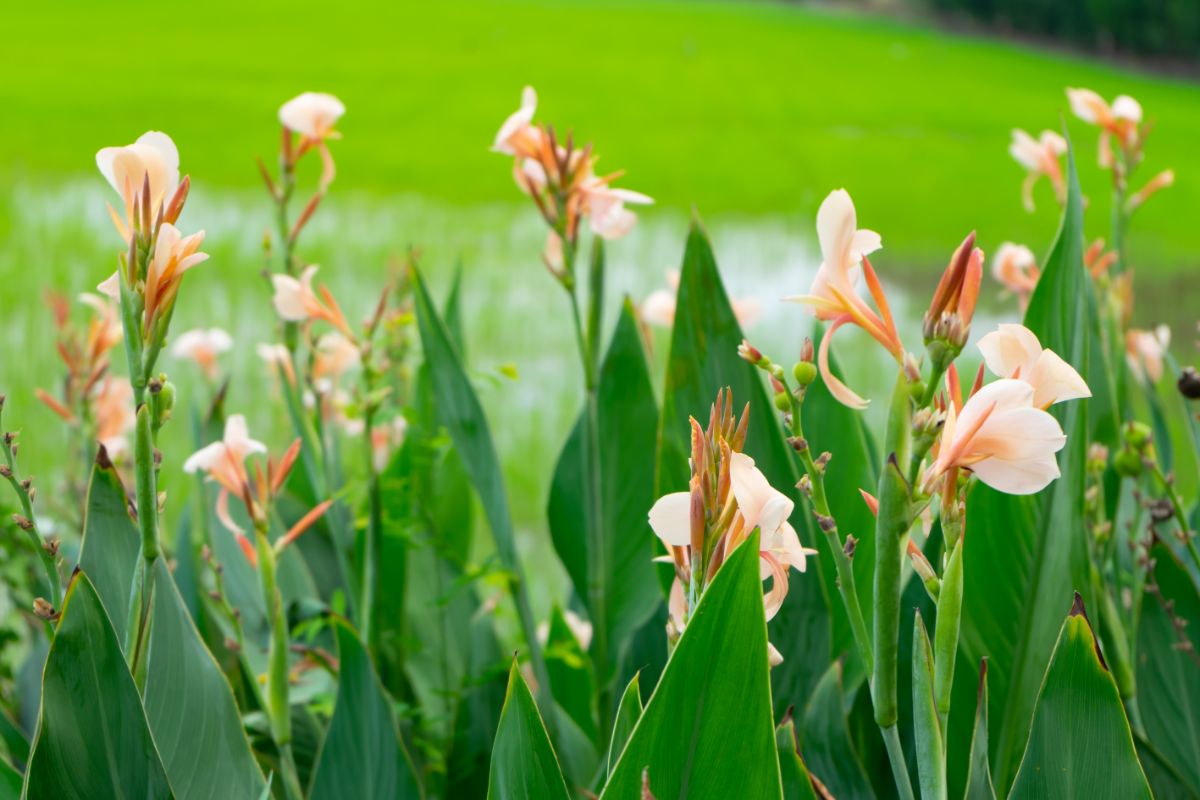
To produce beautiful blooms and maintain healthy foliage, you need to care for your canna lilies with appropriate fertilizing, mulching, staking, and pruning. Here is what to know about each.
How to Fertilize Canna Lilies
Fertilizer can be good for canna lilies. Horn Canna Farm says, “Cannas are not terribly picky when it comes to fertilizer. Cannas easily bloom all summer without much effort. For those of you who want to give your plants an extra boost, we recommend applying 5-10-5 or 10-10-10 two or three times during the growing season.”
The farm continues, “Fish emulsion fertilizer is a little higher in nitrogen but is a fantastic organic alternative for feeding your cannas. Higher nitrogen fertilizers tend to increase the average height of cannas. If you have rose food or tomato food on hand, both are great options for cannas, too!”
How to Mulch Canna Lilies
Mulch can be useful for canna lilies multiple times a year. During summer, it can help keep the soil moist and prevent weeds from growing too close to your canna lilies.
During winter, if your canna lilies are staying outdoors, you can add some mulch to the top of the soil to insulate it against dips in temperatures.
How to Stake Canna Lilies
Despite the fact that cannas can grow up to 5 feet tall, their stems are quite sturdy, making it unlikely that you will have to stake them.
If you must stake them for whatever reason, regular garden stakes and twine should work just fine. If you are pushing the stakes into the soil after planting, watch out, so you do not injure the rhizomes.
How to Prune Canna Lilies
Pruning cannas involves deadheading (which is optional) and trimming back at the end of each season. Here is what to know about both.
How to Deadhead Canna Lilies

If you want to deadhead your canna lilies, you can. The goals of deadheading are twofold: stop the plant from going to seed, and encourage the plant to produce new blooms.
You do not need to deadhead to get additional blooms. Some people swear it is a great way to get more blooms more quickly, but others avoid it because it can be hard to accidentally remove fresh buds.
You can avoid harming the new buds if you just slow down and are mindful of what you are doing.
You can try deadheading and not deadheading and decide for yourself which works best for you.
When to Cut Back Canna Lilies
You can cut back your canna lilies to within a few inches above the soil in the fall. Wait for the first frost to strike the foliage. When it does, do your trimming. You can then proceed with the overwintering instructions below.
How to Overwinter Canna Lilies
If you live in zones 8-10—and possibly 7—you can leave your canna lilies outdoors for the winter. You will need to protect them with mulch, but they should be just fine where they are.
There is an exception for zones 7-8, however, which is if the cannas are in pots. Cannas in containers are harder to insulate from temperature fluctuations, so they can easily get too cold during winter. That is why they should be brought indoors if temperatures are dropping below 50 degrees Fahrenheit.
If you live in colder climate zones, you will definitely need to overwinter your cannas indoors if you want them to survive to bloom again next year.
You will need to unearth the rhizomes. If they need to be divided, this is a good time to do it. Place them out in the sun for several days. This will “cure them,” which helps them get through the winter with less likelihood of rot problems. Once curing is complete, you can put them away for the winter wrapped in a paper bag. Include a little peat moss inside.
Each of the rhizomes should go in an individual bag. Hopefully, none of them will rot, but if any of them do, they will not spread the rot to one another this way.
While you do not want the rhizomes to rot, you also do not want them to get too dry. If they are getting really dry, you can use a spray bottle to mist them gently. Just make sure they can breathe afterwards.
Are Canna Lilies Vulnerable to Diseases or Pests?
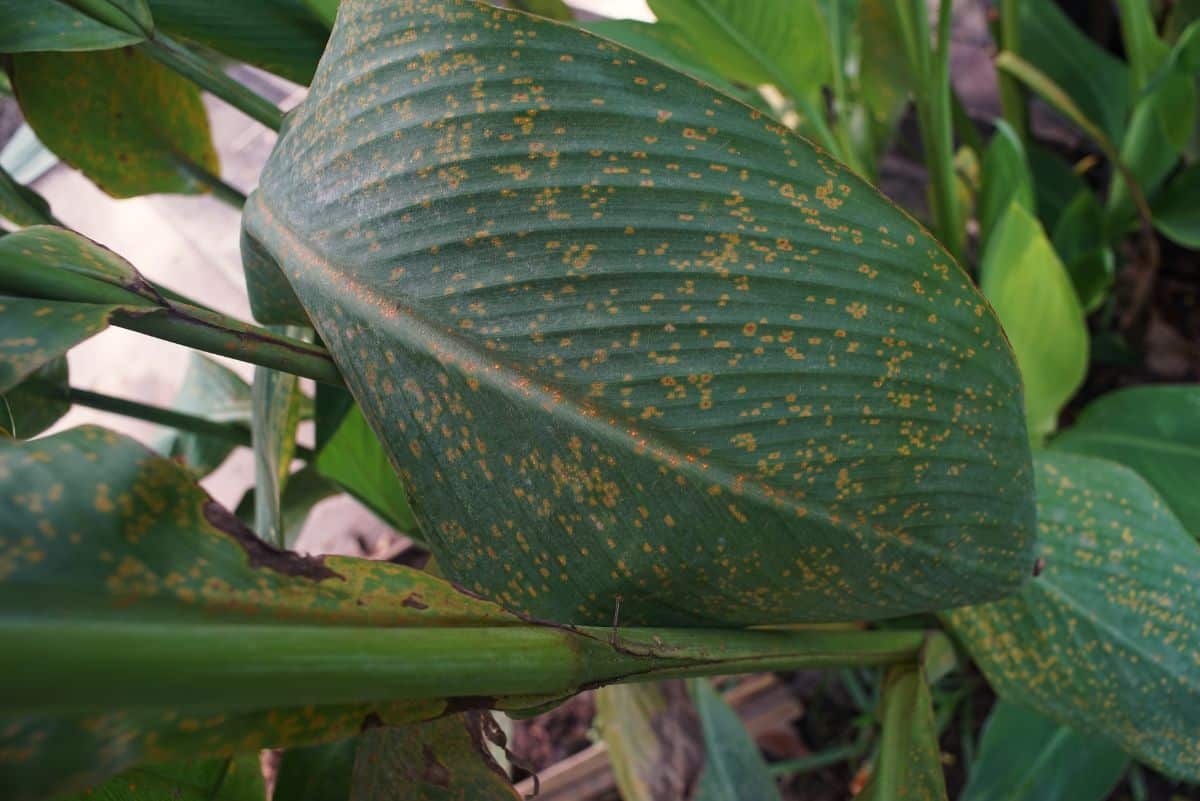
It is not likely that your canna lilies will be afflicted by pests or diseases, but it can happen.
Some diseases that sometimes hit cannas include leaf spots, bacterial bud rot, rust, and botrytis.
Prevention for the majority of disease conditions is simple; just make sure that your cannas are planted in well-draining soil and that they have enough airflow.
Some of the pests that can sometimes compromise cannas include caterpillars, spider mites, slugs, and snails. Of all of these, you are most likely to run into problems with caterpillars.
Guess what else typically avoids canna lilies? Deer and rabbits. So, those are two more pests you can cross off of your worry list.
Recommended Planting Combinations for Canna Lily
Here are some plants that might go well with your canna lilies:
• Elephant ears: The large foliage of canna lilies can easily overwhelm that of quite a few other plants, but not elephant ears. As their name implies, these plants have huge leaves. Like canna lily, they thrive in warmer climate zones.
• Ornamental grasses: A wide range of ornamental grasses can look lovely next to canna lilies. The long, narrow foliage of grasses offsets the leaves of canna lilies nicely, creating a pleasing combination of textures in your garden.
• Hibiscus: This plant is a favorite in hot and humid climates and thus flourishes in the same sorts of conditions that canna lilies prefer. Plant hibiscus and canna lily side by side to bring a tropical look to your landscape. See our Hibiscus Full Growing Guide to learn how to plant them.
• Water hyacinth: Are you planting your canna lilies near or in a water feature? A nice accompaniment to them is water hyacinth.
Now you have a few ideas to start you out, but there are plenty of other plants that make wonderful companions to canna lily.
Canna Lily Landscaping Ideas
Here are a few ideas for how to use canna lilies in your garden to the most stunning effect:
• Backdrop: As tall plants with voluminous foliage and large blooms, canna lilies make excellent backdrops for other shorter plants. Put them at the back of mixed plantings to beautifully frame your other plants. As they typically have darker foliage, bright plants in front of them can really stand out.
• Focal point: A small group of canna lilies or even a single canna lily can make an exquisite focal point anywhere in your garden.
• Container plants: Canna lilies make wonderful container plants, which you can place in your garden or on your patio.
• Mixed borders: A lot of people like to use cannas in their borders. They tend to look best when mixed in with other plants.
• Water features: Although some cannas need well-draining soil to prevent rot, others are actually okay with being planted right in the water. So, you can plant cannas in or near ponds and other water features in your garden.
Recommended Canna Lily Varieties
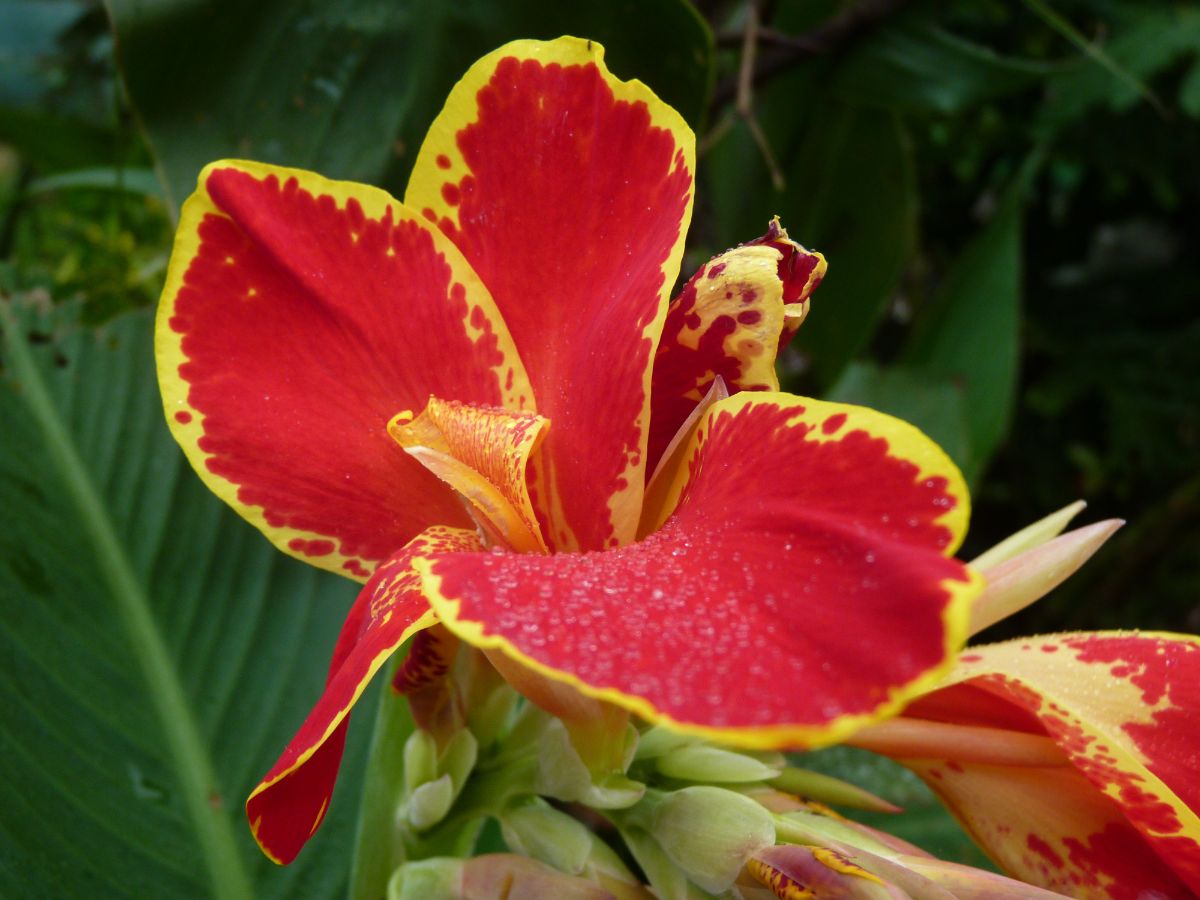
One of the best things about growing canna lilies is that there are a ton of splendid cultivars producing flowers in a broad range of brilliant colors. Here are a few recommended types of canna lilies:
• Canna Elite Banana Punch: The delicious name of this cultivar does a great job describing the banana-yellow hue of its petals. It rarely grows any taller than 4 feet, so if you have been looking for a fairly compact variety, you will love this cultivar.
• Canna Elite Orange Magic: This orange flowering canna can add some tropical flair to your garden. Like Canna Elite Banana Punch, this cultivar is also pretty compact.
• Canna Elite Morning Star: This is one of the most striking types of canna lily you will find. The petals are yellow with prominent orange markings that will put you in mind of a giraffe.
• Canna Tropicanna Black: Are you searching for a type of canna lily that produces especially dark foliage? Consider this cultivar, named for the dark brownish-purplish leaves. They may not literally appear black, but they are impressively dark. The flowers are a contrasting vivid red.
• Canna Golden Lucifer: This eye-catching cultivar of canna lily sports yellow flowers that are covered in tiny red flecks, producing a unique “spotted” appearance. They are especially recommended for growing in containers.
• Canna Cleopatra: Another especially distinctive type of canna lily is the “Cleopatra,” which features bi-color blooms in bright red and yellow. The yellow sections of the petals feature little red flecks. You will find a few better options for showy flowers that generate countless compliments from visitors to your garden.
• Canna Tropicanna: For orange flowers, think about getting this cultivar. But the blooms are arguably not even the most beautiful feature. The colorful leaves are exquisite, featuring streaks of green, red, pink, and purple.
• Canna Pretoria Bengal Tiger: If you can’t decide whether you prefer deep orange flowers or yellow blooms, you may be delighted to find the best of both worlds in this cultivar. The petals are orange with yellow around the edges, presenting a striking look.
• Canna Elite Pink Magic: If you want pink flowers in your garden, you might consider planting this cultivar. It is a favorite among hummingbirds and will draw these friendly pollinators to your garden.
• Canna Kreta: Plant this variety for a bright red flowering canna that will really spruce up your garden. It features a long bloom time extending from late spring to early autumn, and hummingbirds love it.
• Canna Shining Diva: The bright yellow blossoms of this cultivar will bring some sunny cheer to your landscape.
• Canna Fire Dragon: The vibrant blooms of the “Fire Dragon” will delight you with their red hues and attract hummingbirds in summer and fall.
• Canna Elite Orange Chocolate: This extravagant cultivar features purple leaves and magnificent bright orange blooms.
• Canna Robert Kemp: Another excellent choice for attracting hummingbirds is the “Robert Kemp” canna which features bright red blooms.
• Canna Elite Rosita: The gorgeous flowers of this cultivar of canna lily feature petals with a rosy hue.
• Canna Alaska: For beautiful flowers that have a creamy white color, plant the “Alaska” cultivar in your garden.
• Canna Elite Moonshine: Another option for a canna lily with creamy white blooms is this cultivar. They contrast beautifully with the bright green tropical leaves.
• Canna Red Velvet: As the name indicates, the blooms of this variety of canna lily are bright red. The leaves are a purplish-brownish hue.
• Canna City of Portland: If you dream of a canna lily with pink salmon blooms, this is the one to choose.
You will not find all of these cultivars of canna lily at your local nursery. You will have to shop online to find the largest selection.
Frequently Asked Questions About Growing Canna Lilies
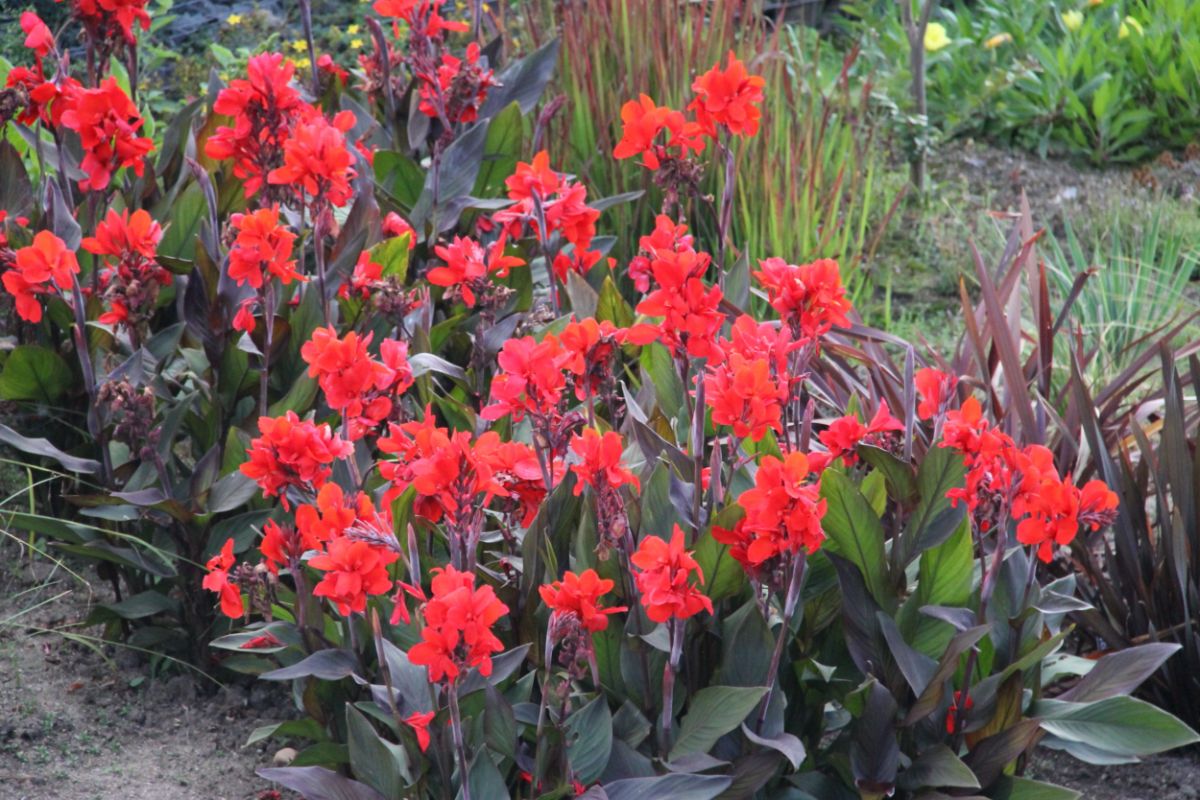
To wrap up our canna growing guide, let’s answer a few FAQs.
If something is eating the leaves of your canna lilies, the most likely culprit is caterpillars. There are some other possibilities as well, though. See the section on pests.
Hypothetically, you could grow a canna lily as a houseplant. That said, cannas are pretty large, which means that they are not suitable for growing indoors in a lot of homes.
You will be delighted to see that the ASPCA lists canna lilies as non-toxic to dogs, cats, and horses.
Quite a few types of plants called “lilies” are poisonous to animals, so if you have been looking for a “lily” that is safe for your pets, cannas are a wonderful option.
You may hear people casually refer to canna lilies as bulb plants, but they actually grow from a rhizome. Caring for a bulb and rhizome plants is very similar, however, so if you have experience with bulb plants, you should do just fine growing cannas.
Yes, canna lilies do like to spread. There are some locations where certain species of cannas are considered to be invasive, but in most locations, this does not appear to be the case.
We do recommend you look up whether they are included on any invasive species lists for your area before planting. But you probably will not have much trouble keeping them contained.
Also, you will probably appreciate the fact that they multiply because it means that within a few years, you will have appreciably more cannas than you started out with.
Where to Buy Canna Lilies
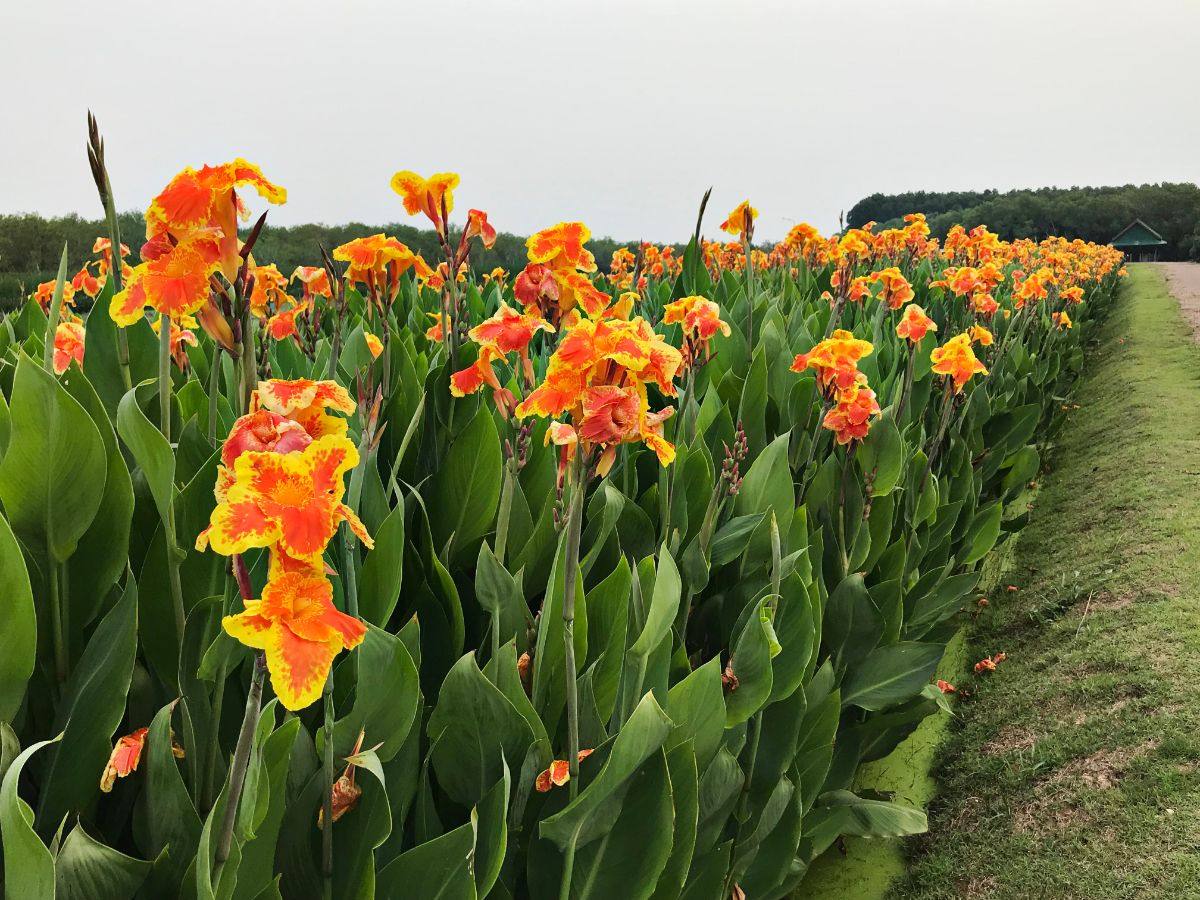
If you are ready to bring the tropical delight of canna lilies to your garden, you can find a large selection of canna cultivars online.

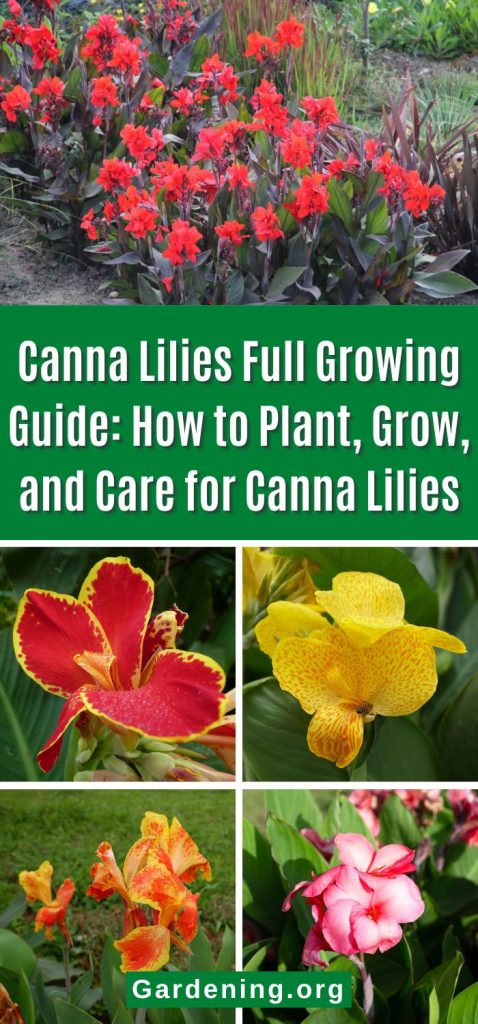



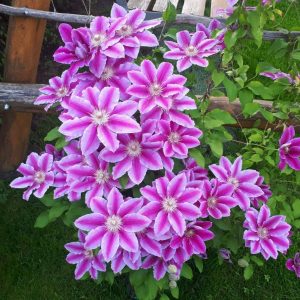
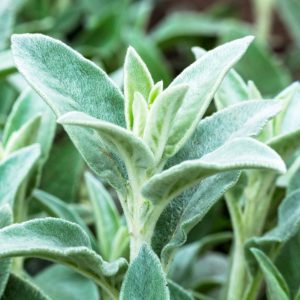


Leave a Reply